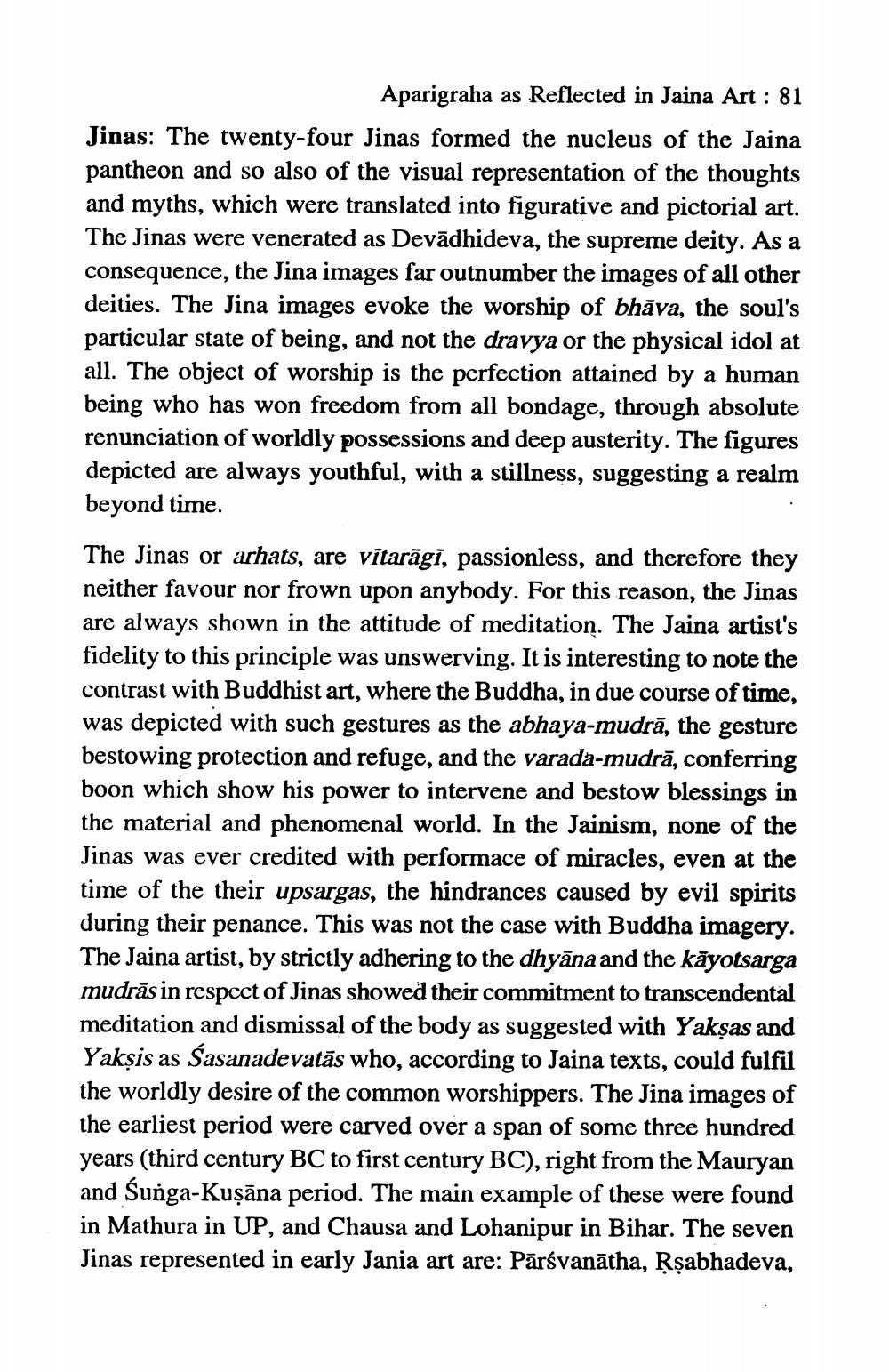________________
Aparigraha as Reflected in Jaina Art : 81 Jinas: The twenty-four Jinas formed the nucleus of the Jaina pantheon and so also of the visual representation of the thoughts and myths, which were translated into figurative and pictorial art. The Jinas were venerated as Devādhideva, the supreme deity. As a consequence, the Jina images far outnumber the images of all other deities. The Jina images evoke the worship of bhāva, the soul's particular state of being, and not the dravya or the physical idol at all. The object of worship is the perfection attained by a human being who has won freedom from all bondage, through absolute renunciation of worldly possessions and deep austerity. The figures depicted are always youthful, with a stillness, suggesting a realm beyond time. The Jinas or arhats, are vītarāgi, passionless, and therefore they neither favour nor frown upon anybody. For this reason, the Jinas are always shown in the attitude of meditation. The Jaina artist's fidelity to this principle was unswerving. It is interesting to note the contrast with Buddhist art, where the Buddha, in due course of time, was depicted with such gestures as the abhaya-mudrā, the gesture bestowing protection and refuge, and the varada-mudrā, conferring boon which show his power to intervene and bestow blessings in the material and phenomenal world. In the Jainism, none of the Jinas was ever credited with performace of miracles, even at the time of the their upsargas, the hindrances caused by evil spirits during their penance. This was not the case with Buddha imagery. The Jaina artist, by strictly adhering to the dhyāna and the kāyotsarga mudrās in respect of Jinas showed their commitment to transcendental meditation and dismissal of the body as suggested with Yakşas and
Yakṣis as Sasanadevatās who, according to Jaina texts, could fulfil the worldly desire of the common worshippers. The Jina images of the earliest period were carved over a span of some three hundred years (third century BC to first century BC), right from the Mauryan and Sunga-Kuşāna period. The main example of these were found in Mathura in UP, and Chausa and Lohanipur in Bihar. The seven Jinas represented in early Jania art are: Pārsvanātha, Rşabhadeva,




